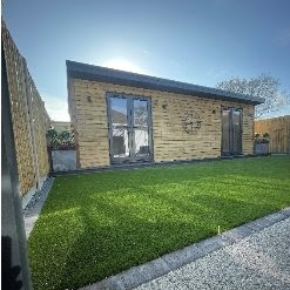
UK usage of air conditioning reaches alarming levels
Guest feature by Dr Andy Lewry – Principal Consultant, Sustainable Energy Team at BRE
A recent report, published by BRE, has highlighted the urgent need for the UK to address the use, design and operation of air conditioning in UK offices and retail environments, following the discovery that cooling in air conditioning might now account for as much as a tenth of the total UK electricity consumption.
According to the report, a two-year study commissioned by the Department of Energy and Climate Change (DECC), now part of the Department of Business, Energy and Industrial Strategy, air conditioning has become more prevalent in UK buildings.
The report finds that in 2012, some 65% of UK office space and 30% of retail space was air conditioned and there is clear evidence that this is set to grow.
To put this into context, it is estimated by Lucas Davis, an energy economist at the University of California in Berkeley, that most of the developed world will have air conditioning in their homes, workplaces and cars within 20 years. His research is backed by the US government’s Lawrence Berkeley National laboratory, where researchers have calculated that 700 million air-conditioning units are likely to be installed worldwide by 2030 and 1.6 billion by 2050.
So what can we do? Whilst there is little we can do to slow the demand for air conditioning, there is potential to improve design and there remains a large untapped potential in the difficult area of management and user behavior.
To put this into perspective, benchmarks for the intensity of electricity consumption for cooling in existing offices state that typical consumption would be expected to be in the range of 31 to 41 kWh/m² pa, with ‘good practice’ consumption levels being 14 to 21 kWh/m² pa. The findings of 32 monitored buildings, adjusted to London weather for comparative purposes, were that 77% of them had consumption intensities of over 40 kWh/m² pa, with 64% above 45 kWh/m² pa.
So where does this inefficiency come from? Poor operation, maintenance and control of systems appear to main cause for this observed difference in energy consumption. Around 70% of offices and 50% of retail environments employ split systems and there was clear evidence of monitored air conditioning operating whilst buildings are unoccupied, typically at night or over weekends.
The report also identified that many system inspection reports provide only generic recommendations relating to maintenance and operation, which are unlikely to significantly improve performance. It would also seem that all too often improvement recommendations are not adopted as they are not sufficiently specific to prompt action.
And here we fall into the larger issue of the circle of blame – who is responsible for making decisions on improvements to existing systems or on system upgrades? Is it the occupier, the investor, the developer, the facility managers or the contractor? All too often the responsibility gets passed from one to another and the result is that either the wrong decision or no decision is made.
Faced with the evidence that around 10% of our electricity consumption is relating to cooling in air conditioning, it is clear that something needs to be done. Demand for air conditioning will continue to rise and so will the associated energy use unless action is taken.
There are several initiatives in terms of reducing loads in new buildings and improving efficiencies of new systems but everyone in the supply chain needs to play their part by addressing the issue that they can influence, whether this be design, installation, commissioning, operation, maintenance or control.
This would be facilitated by the incentivisation of efficient operation and – ideally but expensively – speed up the upgrading of existing systems and buildings.
The full report with appendices is freely available on BRE’s website.
Latest news

29th April 2025
Senior pledges to ‘bee’ part of the solution with new biodiversity initiative
Senior Architectural Systems has installed its first on-site beehive, marking another step forward in its commitment to sustainability and biodiversity.
Posted in Articles, Building Industry News, Building Products & Structures, Building Services, Curtain Walling, Doors, Glass, Glazing, Innovations & New Products, news, Restoration & Refurbishment, Retrofit & Renovation, Sustainability & Energy Efficiency, Walls, Windows
29th April 2025
West Fraser range delivering key benefits for South-East carpentry company
An experienced carpenter and building site manager who has recently set up his own company is using high performance panel products from the West Fraser range.
Posted in Articles, Building Industry News, Building Products & Structures, Building Systems, Case Studies, Garden, Restoration & Refurbishment, Retrofit & Renovation, Sustainability & Energy Efficiency, Timber Buildings and Timber Products
29th April 2025
CPD Courses Available Online From Ecological Building Systems
Ecological Building Systems, a leading supplier of natural building products for sustainable construction, has revealed its comprehensive CPD programme for the year ahead.
Posted in Articles, Building Industry Events, Building Industry News, Building Products & Structures, Building Services, Continuing Professional Development (CPD's), Information Technology, Innovations & New Products, Insulation, Restoration & Refurbishment, Retrofit & Renovation, Seminars, Sustainability & Energy Efficiency, Training, Walls, Waste Management & Recycling
29th April 2025
WindowBASE launches new prospect databases at FIT Show
Visit WindowBASE at the FIT Show to see first-hand how it helps companies find new customers – the company is launching an easy-to-use, intuitive platform on Stand G16 at the NEC Birmingham from 29th April – 1st May.
Posted in Articles, Building Industry Events, Building Industry News, Building Products & Structures, Building Services, Doors, Exhibitions and Conferences, Glass, Glazing, Information Technology, Innovations & New Products, Posts, Publications, Research & Materials Testing, Restoration & Refurbishment, Retrofit & Renovation, Windows
 Sign up:
Sign up: